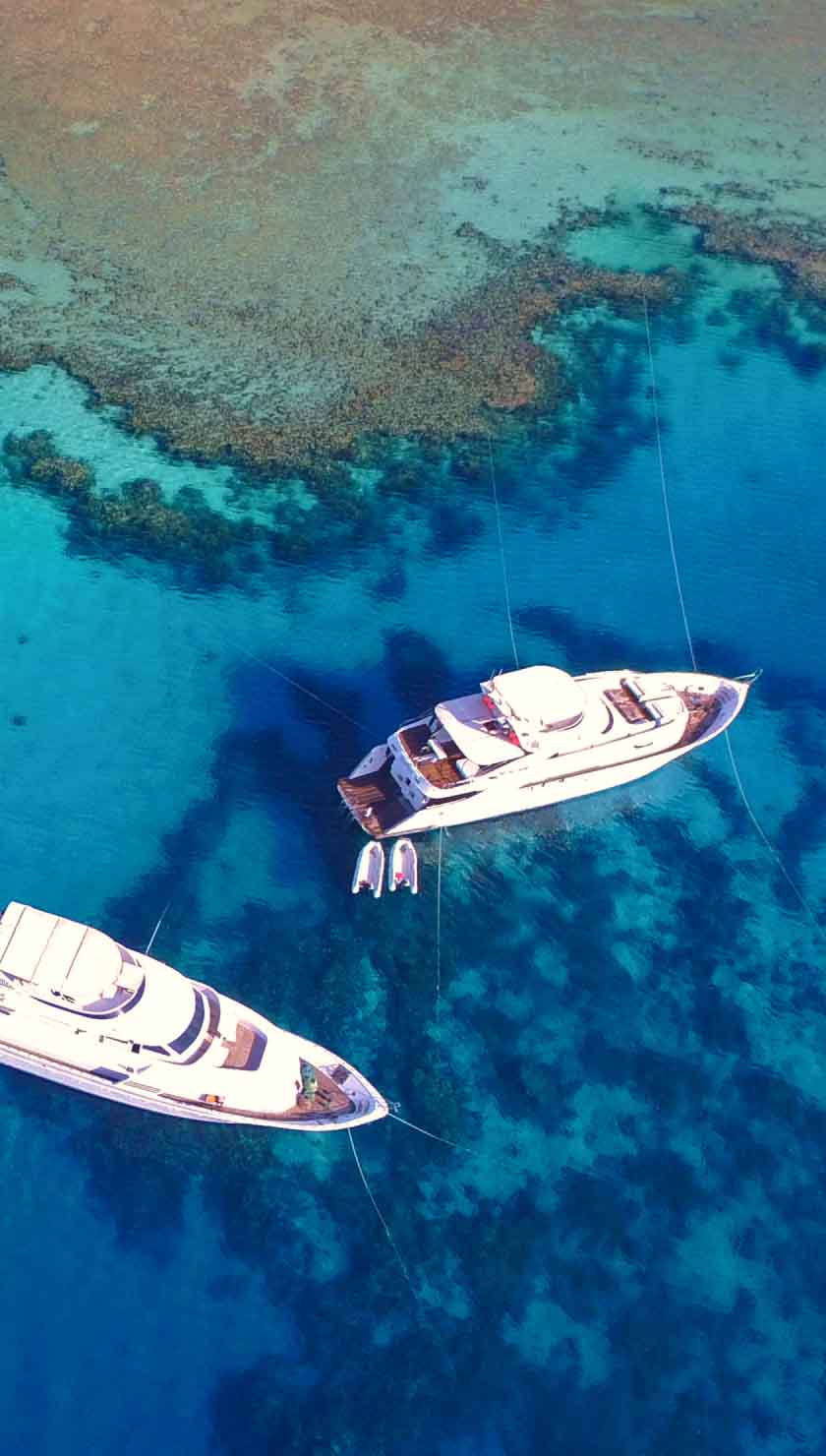Marine Life in Indonesia
A snorkel trip to Indonesia may include turtles, reef sharks, stingrays, whale sharks, or even mantas, but what makes Indonesia's shallow waters most special is the diversity of living coral. Shades of pink, green, brown, red, purple and blue, shaped into spires, huge boulders, expansive tables, branching thickets or delicate vases, are the stars of a good snorkel site in Indonesia. The array of colorful dancing fish that decorate the reefs can entrance onlookers for hours. Indonesia's underwater topography is as diverse as its marine species, with walls, pinnacles, plateaus, and channels; divers see the most of this landscape variety, but it can still add to the snorkeling experience.
Best Snorkel Sites in Indonesia
Komodo National Park, east of Bali, became famous for its nine foot long Komodo dragons, but the islands of the park are now equally renowned for their surrounding waters. Komodo's marine protected area combines pelagics-viewing opportunities with intriguing macro-life and vibrant coral, offering a package deal of mantas, sharks, pygmy seahorses, and bountiful fish. A snorkel tour in Indonesia, if based in the Bali area, often centers on Komodo. Incredible snorkeling liveaboard opportunities mirror the local diving liveaboards, with multi-day trips that bring snorkelers to the best Komodo sites and neighboring snorkel hotspots.
One of the best snorkeling areas in Indonesia is Raja Ampat, reputed to be the center of the Coral Triangle biodiversity hotspot (and some say the most biodiverse place in the world). This remote region in the east of Indonesia's archipelago hosts, in a small geographic space, more than 500 species of coral and an explosion of fish and invertebrate species to match. Snorkelers visit Raja for pristine coral reefs decorated with sparkling fish, and it's been called a snorkeling paradise by many visitors. Turtles, sharks and mobulas can sometimes be seen, and mantas may be found if you hop on a tour that goes searching for them.
Wakatobi is an acronym for Wangi-Wangi, Kaledupa, Tomia, and Binongko, four islands in remote Sulawesi Tenggara (not quite as far east as Raja Ampat). Crazy critter explorations made Wakatobi famous; come here if you want snorkel spots with Blue-ringed Octopus, frogfish, cuttlefish, and many other creatures, while also enjoying reefs with 100 percent coral cover and plentiful fish biomass.
The Banda Islands have more recently opened up to snorkeling and diving. Formerly called the Spice Islands and alternatively known as the Moluccas, this tiny chain of landmasses in the middle of the Banda Sea was coveted during the Age of Exploration as the one and only source of nutmeg worldwide! Banda snorkeling may be Indonesia's best-kept secret, with amazing coral gardens and big predators like groupers, Napoleon Wrasse, and sharks. (Divers have the chance to encounter schools of hammerheads!) Pulau Hatta in particular offers snorkelers plentiful fish (including larger species), a colorful, shallow plateau, and a dramatic drop-off.
Cenderawasih Bay near the Raja Ampat area, is the best Indonesia snorkeling site for encountering whale sharks. These giants often circle underneath the gathering-spots of local fishermen, which may be more than one hour out to sea. Be cautious if you jump in for this admittedly incredible experience; local scraps feeding and desensitization to people have led to some harmful behaviors by both parties, from people touching or riding sharks to sharks bumping humans while looking for food.
In the Bali area, Nusa Lembongan and Nusa Penida are known for wall diving, especially with Sunfish (Mola Mola), but they offer some great snorkeling spots to see Giant Mantas as well. Indonesia snorkeling enjoys a host of options, one of the most-loved being the Gili Islands. The three Gilis have different characters, and all have snorkeling areas, but quieter Gili Meno is often cited as a good place for healthy coral, fish variety, and some larger fish encounters. Turtles are common on the Gilis, and beaches are abundant. Lombok's mountainous terrain lies just across from the Gilis and is an alternative point of departure for Gili snorkeling tours.
Best Time to Snorkel in Indonesia
Snorkel sites in Indonesia can be visited year-round, but most visit Komodo and Raja Ampat between October and June, the Banda Islands from September through December, and Wakatobi at any time besides the locally rainy January and February. Obviously, the best time for Indonesia snorkeling varies between regions, so doing extra research on each destination is highly recommended. The water temperature also ranges widely, from 20 to 28 C, and visibility from 5 to 50 meters. Currents may be present and strong, or absent, depending on the location.
How Do I Get To Indonesia?
International flights to Indonesia are almost exclusively bound for Bali or Jakarta. The capital Jakarta can be reached by a variety of airlines, with direct flights from various destinations. Bali's Ngurah Rai Airport usually receives direct flights from within the Southeast Asia region, from cities like Bangkok, Kuala Lumpur, or Hong Kong. Dubai and Singapore are also often points of origin or transfer when flying to Bali.
Within Indonesia, in-country carriers like Lion Air, Garuda, and Air Asia can get you from Jakarta and Bali to your chosen snorkeling base. Labuan Bajo is a common departure point for snorkeling Komodo, Sorong for Raja Ampat, Kendari and Wangi-Wangi for Wakatobi, and Ambon for the Banda Islands. Note that additional flights and/or boats may be necessary even after reaching these regional hubs- Indonesia is infamous for eating up vacations with travel time, so plan accordingly.

















